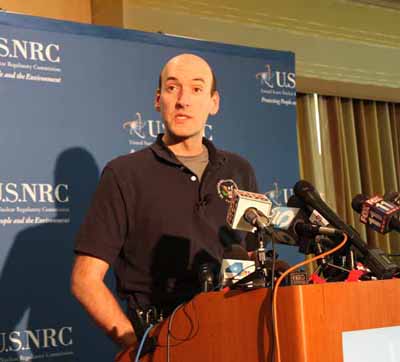Southern California Edison (SCE), operator of the San Onofre Nuclear Generating Station near San Clemente, Calif., must understand and address unusual wear on steam generator tubes before it can be allowed to restart the beleaguered two-reactor nuclear plant, the Nuclear Regulatory Commission (NRC) said on Tuesday. California officials are meanwhile preparing contingency plans to prevent power outages this summer that could result from the plant’s indefinite shutdown.
The plant’s Unit 2 has been shut down since Jan. 9 for a planned refueling and maintenance outage; SCE operators performed a rapid shutdown of Unit 3 on Jan. 31 after a leak was detected at one of that unit’s steam generator tubes. For both units, this was the first cycle of operation with new replacement steam generators that cost $671 million: Unit 2 replaced its steam generators in January 2010 and Unit 3 in January 2011. Each steam generator has 9,727 steam generator tubes, and the new equipment is intended to last until the plant’s license expires in 2022.
According to SCE, recent extensive testing of the steam generator tubes at the plant lasting eight days identified two causes of the unusual wear: from tubes that are vibrating and rubbing against adjacent tubes and against retainer bars, which are support structures inside the steam generators. SCE is still working to determine why this is occurring, it said on Tuesday.
A Failed In-Situ Pressure Test
According to results of the tests filed with the NRC, although only one tube required pressure testing on Unit 2, six other tubes required plugging and another 186 tubes were plugged as a precautionary measure. Meanwhile, at Unit 3, eight tubes failed pressure testing.
“Failure of the in-situ pressure test is an indication that, for certain design basis events, such as a main steam line break, these steam generator tubes may not be able to maintain design structural integrity,” wrote NRC Regional Administrator Elmo Collins in a letter to SCE Chief Nuclear Officer Peter Dietrich on Tuesday.
Collins’ letter outlined a series of actions SCE had committed to take before restarting each unit. First, it would plug all tubes in Units 2 and 3 for which testing indicated wear in excess of industry guidelines, as well as all tubes susceptible to this wear because of their location. SCE will also determine the causes of the tube-to-tube degradation and establish a protocol of inspections and/or operational limits for Unit 2 and 3, including plans for mid-cycle shutdown for further inspections. The protocol is intended to minimize the progression of tube wear and ensure that any tube wear does not progress to the point where it compromises tube integrity.
“This Confirmatory Action Letter formalizes commitments that Southern California Edison has made to ensure that the cause of the tube wear in both steam generators is understood and appropriately addressed in order to ensure safe operation,” Collins said in a statement on Tuesday. “Until we are satisfied that has been done, the plant will not be permitted to restart.”
On Tuesday, meanwhile, SCE said it “welcomed” the NRC’s letter, which was a “formal step in the process of restarting Units 2 and 3.” The Edison International subsidiary also said it has committed in writing to the NRC that it would “proceed deliberately and conservatively to implement these steps, always bearing in mind that safety is our first priority.”
Contingency Plans Are Under Way
If the 2,350-MW nuclear plant will remain offline through the summer, San Diego and portions of the Los Angeles Basin may face local reliability challenges, the California Independent System Operator Corp. (CAISO) last week said in an urgent update to its summer grid forecast.
“Our focus is contingency planning should [San Onofre] remain offline this summer,” CAISO President and CEO Steve Berberich told a board of governors meeting last week. “Fortunately, there are resource options available to help mitigate reliability risks. We are actively working with San Diego Gas & Electric, Southern California Edison and others because prudent mitigation planning takes adequate lead time and summer heat is only a couple months away.”
CAISO said in its update that technical studies showed “very tight” reserve margins for the region, particularly during potential summer heat waves. Contingency planning potentially included calling back into service the 452-MW Huntington Beach Power Plant, a natural gas–fired power plant that AES retired this January and sold to Edison Mission Energy.
CAISO also called for an accelerated completion of the Barre-Ellis & Sunrise Powerlink transmission projects. Other measures include re-activating energy conservation campaigns and coordinating military and public agency conservation in key areas of Southern California to further soften peak demand.
In an interesting aspect of the report, CAISO urges that new generation investment in California keep pace with future load growth—which is anticipated soon, as economic conditions improve—and as older power plants are expected to retire, at the same time. A noteworthy challenge is that 12,000 MW of natural gas-fired generation is at risk of retiring over the next five years as a result of a state once-through cooling regulation that became effective in October 2010. Compliance dates for most of these plants range from 2015 to 2020. California’s two nuclear facilities have until 2022 and 2024 to comply.
Sources: POWERnews, SCE, NRC, CAISO








